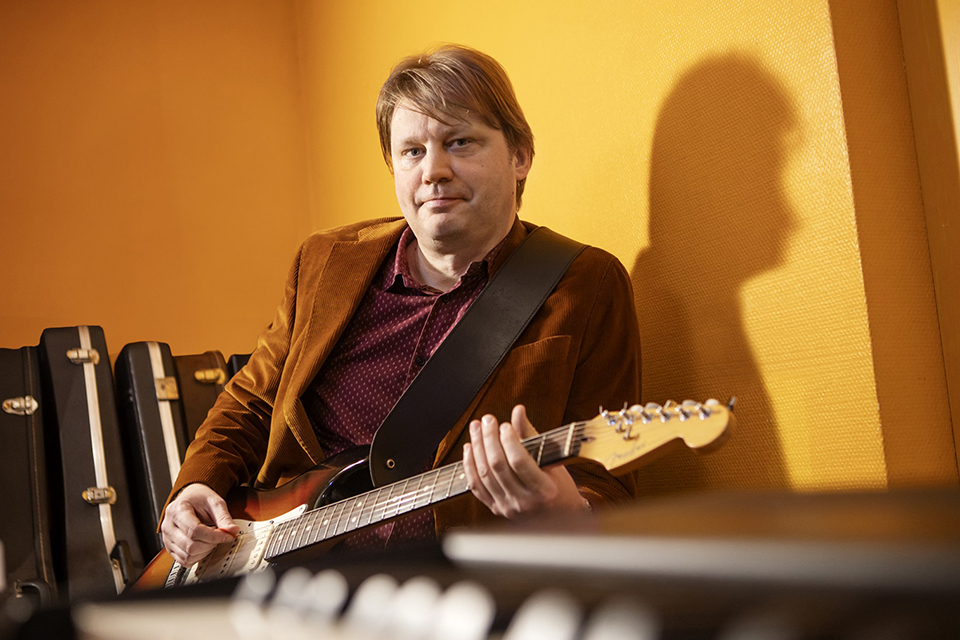Music therapy supports the development of interaction
Psychotherapists find music an interesting form of treatment thanks to its nonverbal interactive nature, says adjunct professor at Uniarts Helsinki Sami Alanne, whose new book is a comprehensive dive into music therapy by presenting its history, research and methods.

Nowadays, music therapy is an established form of treatment, and its roots are in psychoanalysis studies carried out at the start of the 1900s. It emerged as its own field in the 1940s–50s in the United States.
The methods used in music therapy have not changed much over the years, but recently new information has been acquired about how different parts of the brain can be understood in psychology and therapy.
“Music speaks to the mind and brain and lives between the relationship of the patient and the therapist,” music therapist, psychoanalyst and researcher Sami Alanne summarises the therapeutic impact of music.
For example, music therapy can help clients who have no linguistic abilities needed for verbal psychotherapy.
Sami Alanne’s book “The Theory and Practice of Psychodynamic Music Psychotherapy” was published in March 2023. It covers the latest theories and practices of developmental psychology related to psychoanalysis, neuropsychiatry and music.
New research results corroborate Freud’s theories
Alanne’s book narrates the entire development course of music therapy spanning over a hundred years and extending to the most recent neurological findings.
According to Alanne, new results from genetic research and brain research are also well aligned with the theories developed by the founder of psychoanalysis Sigmund Freud, reinforcing the importance of psychoanalysis.
Nowadays, both psychoanalysis and music psychotherapy emphasise the therapeutic relationship between the client and the therapist.
“Meanings are not solely ascribed by the analyst, and instead, meanings that come about out of the subconscious are born through interaction. This is also the direction that psychoanalysis has taken. The importance of interaction in the here and now is increasingly stronger.”
The latest brain research shows that interaction can be improved through music and that music works in various parts of the brain.
“Music can be used to activate the parts of the brain that are connected to early childhood experiences, emotions of attachment and early interaction.”
Music therapy is suited for children and elderly people alike
Besides presenting research results, Alanne’s book also offers information on how therapists can make use of music therapy in practice in their work.
According to research, music therapy provides efficient help for client groups such as children who have difficult developmental or behavioural problems, because active music-making helps them to concentrate. Another benefit is the fact that music and improvisation that do not involve skill requirements are motivating activities, because they present the participant with the opportunity to succeed.
People who suffer from drug, alcohol or other addictions end up dealing with or numbing their difficult emotions through their addictions. Music can step in and offer a positive way to process a range of emotions.
It needs to be remembered, however, that music is not always therapeutic. In certain situations, it can actually cause fear or panic in people like refugees and asylum seekers, for example, Alanne writes. Music can be used as a torture method or as a way of taunting the enemy in a war situation. Already back in Nazi Germany, prisoners in concentrations camp were played music nonstop as one of the strategies to drive them to their psychological breaking point.
With this in mind, a therapist working with a client who has fled from their home country needs to be culturally sensitive and attentive if the client’s previously positive connection with their own cultural background has turned negative due to fear-filled experiences.
“The core of psychodynamic music therapy is a deep human understanding and ethos of music, people and culture and their relationship, which cannot be reduced to research, algorithms and statistics,” Alanne notes as a reminder at the end of his book.